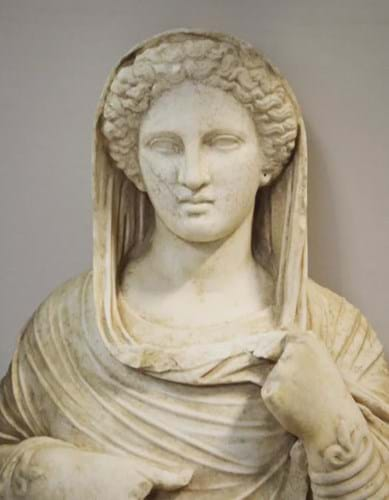
A funerary statue from Cyrene dating to the 2nd century BC which was returned to Libya last year after being seized by UK Border Force officials. Specialists at the British Museum were asked to assist in the identification of the statue and it was believed to have only been out of the soil for a few years.
It has been open for signature since 2017 but has so far been signed and ratified by only five members of the Council of Europe and one non-member state.
Perhaps unsurprisingly, most of the countries that have adopted the convention are ‘source’ countries, such as Cyprus, Greece, Italy and Mexico, which have an inherent interest in protecting their cultural heritage.
The convention complements a number of existing international legal instruments aimed at protecting cultural heritage, including the 1954 Hague Convention on the Protection of Cultural Property in the Event of Armed Conflict (together with protocols), the 1970 UNESCO Convention, and the 1995 UNIDROIT Convention.
Protection aim
Where the Nicosia Convention differs from these other instruments is that it aims to prevent and combat the destruction, damage and trafficking of cultural property by providing a criminal justice response to cultural heritage protection: it establishes specific criminal offences, such as theft and other forms of unlawful appropriation, unlawful excavation and removal, illegal importation and exportation, and illegal acquisition and placing of artefacts on the international art market.
It also criminalises the falsification of documents to prevent fake certification of tainted objects, and intentional damage or destruction of cultural property. The convention makes the link between cultural heritage offences and combating international terrorism and organised crime, albeit without addressing them specifically.
Negotiations during the drafting of the convention highlighted the implicit tension between the requirements of source countries and importing countries. The convention therefore attempts a compromise between the two by allowing signatory states freedom to establish their own legal solutions, so long as they are compatible with the terms of the convention.
States that already have a compatible or partially compatible legal framework will need to make correspondingly fewer changes to their national laws.
Interestingly, the European Union also sought to strengthen cultural heritage protection through Regulation (EU) 2019/880 of the European Parliament and of the Council of April 17, 2019, on the introduction and the import of cultural goods, which introduced certain outright bans on importing cultural heritage objects and seeks to create a licensing and registration scheme for other objects (yet to be implemented).
The UK remains a member of the Council of Europe (not to be confused with the European Union) but has so far neither signed nor ratified the convention, although the UK does already have sanctions regimes in place, criminalising the trade in certain objects illicitly removed from Syria and Iraq.
Growing problem
So will the Nicosia Convention be effective?
Illegal excavation, damage to and trafficking of cultural objects has been a growing problem internationally in the context of conflicts in places such as Iraq, Afghanistan and Syria. The objective of the convention is therefore both laudable and necessary. If nothing else, it raises awareness for better and more effective international cooperation in the field of cultural property protection.
One of the underlying ideas is that it will be easier for countries to share information, cooperate across borders in investigating and prosecuting offences, and in enforcing rules for the protection of cultural property, if these rules are harmonised internationally and no doubt the idea is sound in principle.
Whether the convention will also be effective rather remains to be seen. Unless it sees wider adoption, not only by source countries but also by destination countries of illegally excavated and trafficked cultural objects, it will be difficult for it to gain real traction.
While the convention is a further step forward, and will hopefully strengthen and add to the protection of cultural property in the long run, what is really required is commitment, resourcing, action and effective cooperation by national authorities from key art market players such as the UK, the US, China, and some European countries.
For now, unfortunately, the looting and illegal trafficking of cultural heritage objects continues.
Gregor Kleinknecht
Partner at Hunters Law











